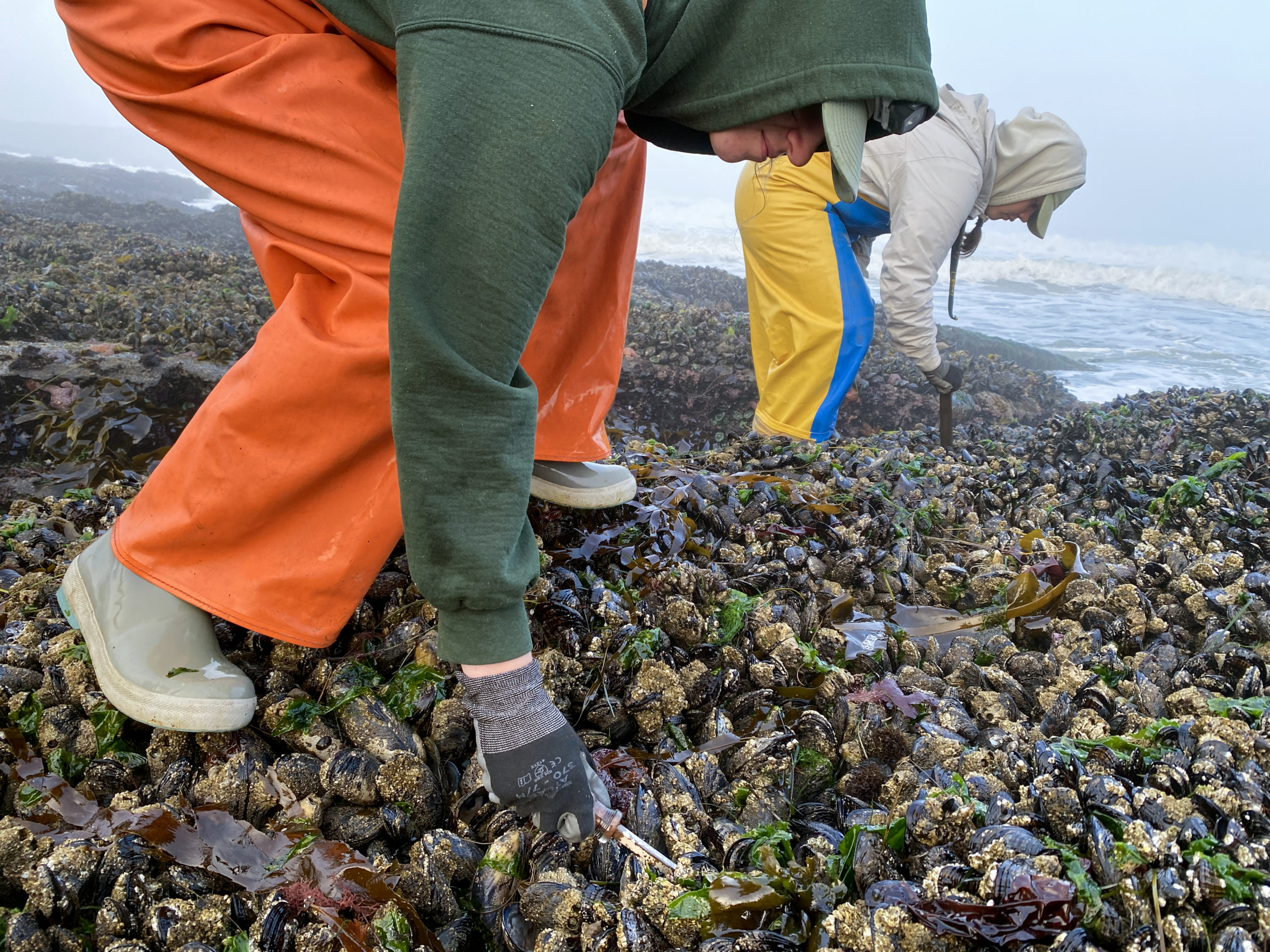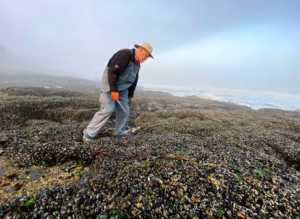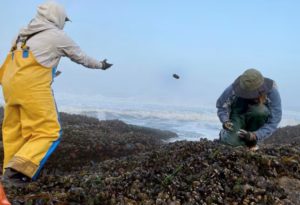
By APRIL EHRLICH/Oregon Public Broadcasting
DEPOE BAY — Like many sea creatures, mussels along Oregon’s coastline are struggling. Their population took a sudden nose dive this summer, and researchers aren’t sure what’s behind the die-off.
This mystery is what brought Oregon State University professor and marine ecologist Bruce Menge and his research team to a tide pool in Depoe Bay in mid-August. Wearing waterproof overalls and looking out at the restless ocean, Menge said mussels at research sites across Oregon have been dying at alarming rates since June.
“And they’re doing it in sort of a random way,” Menge said. “It’s not all the mussels in a given area, but it’s one here, one there, one over there. But it adds up to numbers that are way higher than anything we’ve ever seen before.”
Menge says researchers in British Columbia and Northern California have also seen an uptick in mussel deaths, but the trend doesn’t seem to extend farther south.
So Menge recruited research technicians to help him count dead and dying mussels at various sites throughout the summer, including the Fogarty Creek State Recreation Area. There, he and his team used hand-held pry bars to wrestle sickly mollusks from their tightly packed clusters.

“I found another one,” Menge called out to his colleagues. “And it’s got tissue in it.”
As high-tide waves crashed ominously nearby, the team — consisting of two research technicians and a graduate student — looked for mussels that were slightly open and still had meat inside their shells, meaning they were still alive. If after a few quick taps a mussel didn’t close up, or it was slow to respond, that meant it was likely dying.
Those dying mussels, as well as a collection of apparently healthy mussels, were tossed into buckets and sent to labs. The labs would later test sea water samples and mussel tissue for any red flags, such as physical deformities or toxins.
While extreme ocean temperatures on the East Coast made headlines this summer, Menge doesn’t think this die-off is related to a warmer Pacific, because Oregon’s coastal waters have been relatively cool.
Oregon’s coast was hit with several upwellings this summer. That’s when strong winds push away the ocean’s surface water, thereby drawing in cooler water from the ocean’s deep. That deep ocean water is full of nutrients, including tiny lifeforms called phytoplankton. Menge thinks they might be tied to the mussels’ sudden die-off.
“A toxin released by those [phytoplankton] might be in the water and negatively affecting all the mussels, such that their digestive systems don’t work as well,” Menge said. “If that hypothesis is correct, it might be that they’re simply starving, even though there’s a lot of food in the water.”

That could explain why mussel deaths have been so scattered. Maybe the ones that are surviving have some sort of beneficial physical trait, like a larger shell or thicker internal tissue.
Even before this current die-off, Menge said, mussels have been under stress for decades. During the 25 years that he’s been studying mussels, he has noticed mussel reproduction rates declining, and the amount of tissue within their shells shrinking.
“They’re sort of on the edge, and it’s a little — it’s a lot concerning,” Menge said.
Mussels are what’s called a “foundation species,” in that hundreds of other creatures rely on them for food or habitat. Barnacles cling to their shells, their massive clusters create an ideal home for seaweeds, and sea stars rely on them for food.
“If we lost all these mussels, it would be an environmental catastrophe,” Menge said.
Menge said identifying what’s behind this recent mussel die-off is crucial, because it could help researchers determine what this means for the rest of the ocean.


